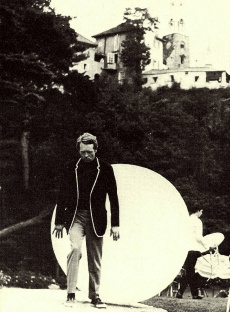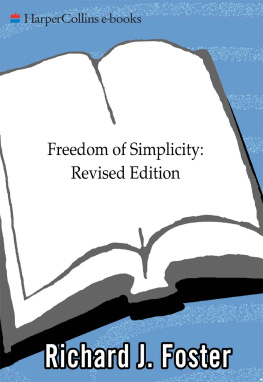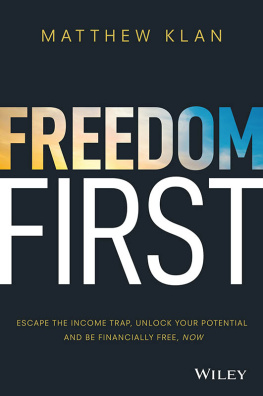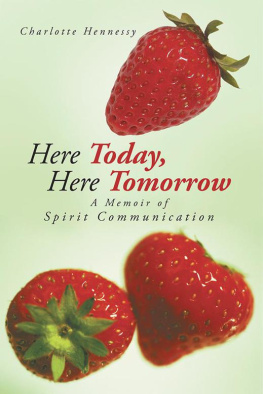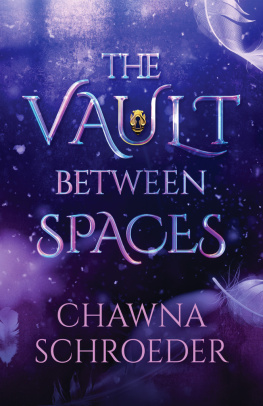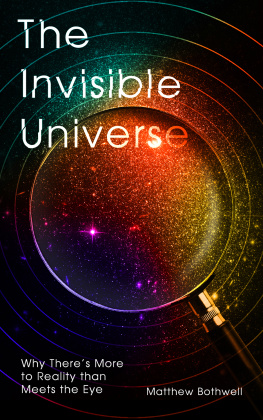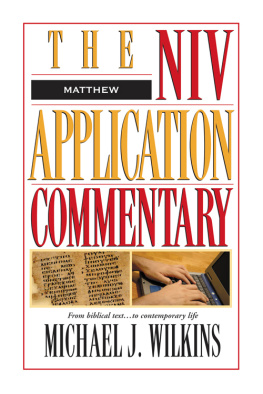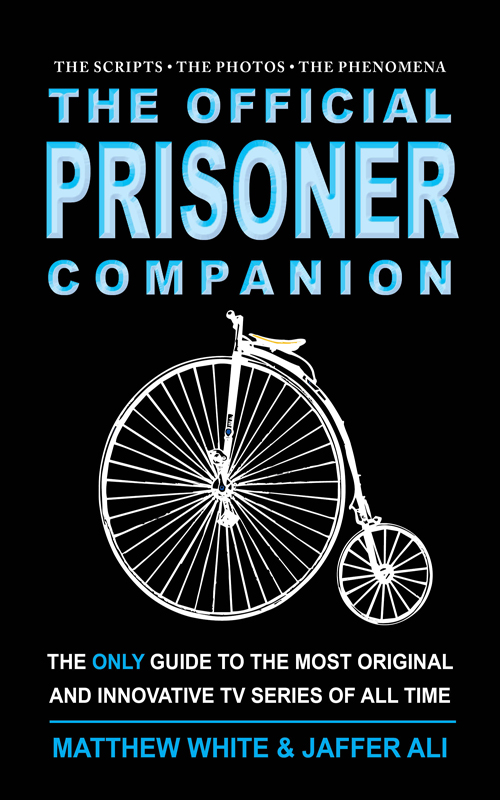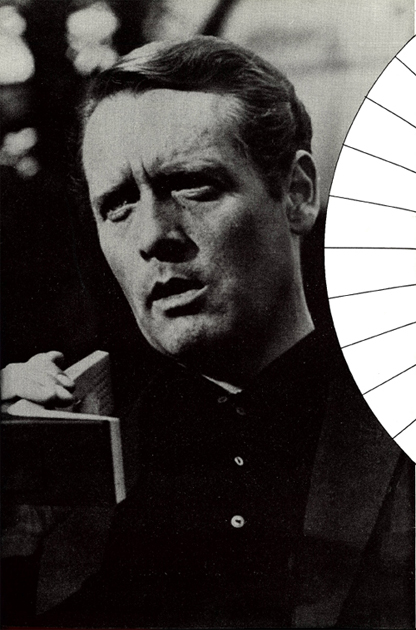
Warner gratefully acknowledges ITC Entertainment, Inc. for use of material from THE PRISONER, 1967 ITC Incorporated Television Company Limited. All rights reserved.
Copyright 1988 by Matthew White and Jaffer Ali
All rights reserved
Warner Books, Inc.,
Hachette Book Group
237 Park Avenue
New York, NY 10017
Visit our website at www.HachetteBookGroup.com
First eBook Edition: November 2009
ISBN: 978-0-446-56926-2
From Jaffer:
In memory of my Father
From Matt:
To Connie & Paula
There are two names on the cover of this book, but there are many more behind the scenes. The book could not have been official without the strong help and assistance from people at ITC, especially Ed Gilbert, Ben Crimmee, and Murray Horowitz. And the book would not have been done without Bob Miller at Warner Books (who really believed in this project) and our literary agent, Susan Urstadt (who made this happen). Other people who helped bring life to our publication include: Bruce Clark, Karl Weiner, Michael Pollack, Donna McCrohan, Darrell Moore, Tony Lytle, Stefaan Janssen, David Lawrence, and Gordon Tarn (who gave us inspiration and help when we needed it most). And always, heartfelt thanks to Waleed and Malik and to Carol and Liz.
I suppose that [The Prisoner] is the sort of thing where a thousand people might have a different interpretation of it, which I think is very gratifying. I am glad thats the way it was, because that was the intention.
Patrick McGoohan
T he Prisoner is one of those rare television shows that refuses to surrender to the inevitabilities of time. Produced over twenty years ago, this caustic and penetrating allegory is still alive and kickingperhaps more popular now than when it first aired. Theres meaning in this.
In writing this book, weve been concentrating on what The Prisoner means: what its trying to say, what message is concealed in its allegory, what profundities are to be revealed in places like The Village and in characters like Rover and Number Six. But perhaps the more important question is why, after twenty years, does The Prisoner continue to fascinate us? Why, indeed, is this book being written now?
Its easy to say that The Prisoner was ahead of its time, but thats missing the point. The Prisoner was a product of its time, the same time period that produced the Beatles and Timothy Leary and Vietnam. Many of the episodes have been properly interpreted as expressions of contemporary issues, be it the Vietnam War or recreational drug use or alternative life-styles. But few people watch The Prisoner for these reasons. People continue to watch and talk about The Prisoner because it remains the most unusual, the most provacative, and the most controversial television series ever produced. It dared to probe the boundaries of what a television series could be, and as such, it is unique and deserving of respect.
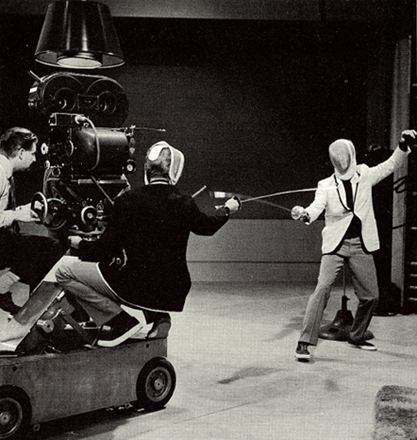
Behind the scenes of THE SCHIZOID MAN.
It is also extraordinarily entertaining. Each episode is fun to watch, and that point is often neglected by those who, like us, feel compelled to interpret the series, to get at its meaning, to solve the unsolvable riddles. But like Shakespeare, Patrick McGoohan was charged with pleasing two audiences: the casual viewers who are quickly bored and his creative muse who demands a strict allegiance to artistic integrity. Although much of what has been written on The Prisoner during the past twenty years has tended to be on the scholarly side, there should be no mistaking that McGoohan was a master entertainer: he knew how to attract an audience and how to keep them watching.
The most difficult aspect of writing this book has been to maintain the balance that McGoohan maintained: to confront the issues but not lose sight of the fact that the show itself had humor, intrigue, and mystery. Its especially difficult when the issues themselves are so profound: the individual and society; the philosophical nature of freedom; the concentration and abuse of power; the destructive worship of progress. These are not issues that are hidden under the surface of the series. Theyre up front, blatant, threatening: theyre what the show is all about. Like 1984 and Brave New Worldthe two works of art most often compared with The Prisonerthis series was designed to make people confront their society and their life-style, to ask the big questions. Butand this is importantthose questions were not posed in a philosophical treatise to university professors. The questions were posed instead in a seventeen-episode network television show that aired in prime time to entertain the general viewing public.
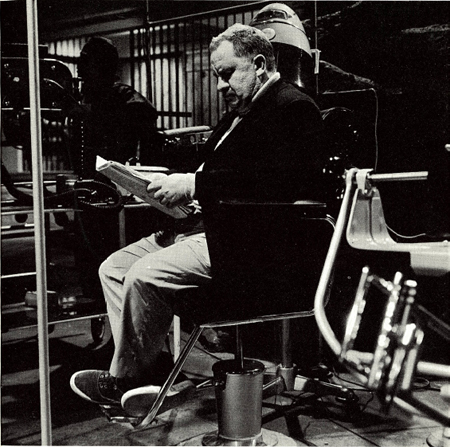
Leo McKern takes a break during the production of FALL OUT.
Fans of The Prisoner are unlike fans of any other television show. Those who have carried the torch for the past twenty years have been uncompromising in their dedication to the series. They have boldly debated the philosophical questions raised by The Prisoner, they are quick to identify Prisoneresque problems in modern life, and they have faithfully tended the gardenconducting extensive interviews with even the most minor production personnel, laboring over shooting scripts and musical scores and other papers that may reveal a new fact about the show, and taking great pains to provide other fans from around the world with the most minute details about the making of the series. Indeed, these people are not really common fans but scholars, and much of this book benefits from their extensive scholarship.
We have tried, in compiling this book, to explore the mysteries and mine the riches of The Prisoner. Its been a lot of fun. But, frankly, there is much in this series that will never be defined, certain questions that will never be answered. That, according to McGoohan, was the intent of the series: to ignite thousands of equally valid interpretations. Those who insist on answers may find that frustrating. Others, like us, find it to be liberating. We find The Prisoner to be a dynamic catalyst of ideas, one that steadfastly refuses to knuckle under to quick and glib interpretations. Thats why were still watching it. Thats why were still debating it. And thats why were writing about it now, some twenty years after its initial release.
There are several mechanical problems that have to be addressed in order to fully understand the complexities of The Prisoner. The most frustrating of these is the proper ordering of the episodes. The order of the episodes in the Episode Guide is that under which ITCthe production companyintroduced the series to the United States in 1968. It is also the order by which the videocassettes are sold in the United States. This is not the same order by which they originally played in the United Kingdom. And were still trying to figure out in what order the episodes were actually produced. Indeed, one of the most persistent controversies among

